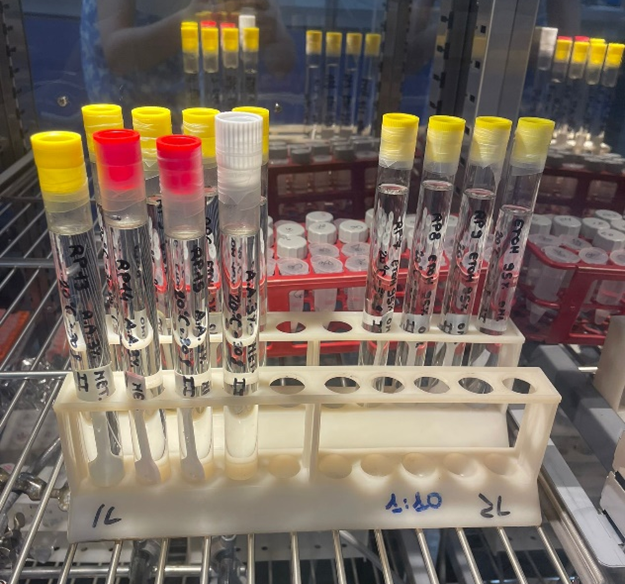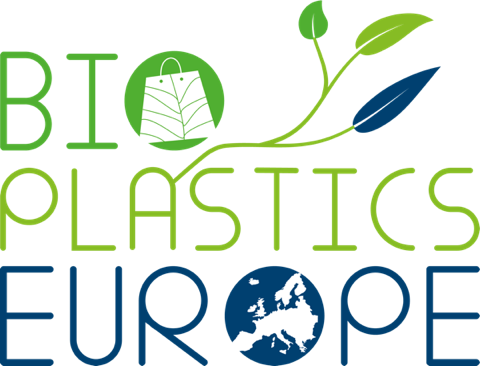Work Package 5: Testing to improve compounds
By Samantha Caputo, Stefano Gianazzi and Elisabetta Arato (TICASS, Italy).

Pictured: Exposure of samples on food simulants during migration test (TICASS).
Pre-normative research and experimental activities are helping the BIO-PLASTICS EUROPE Consortium in defining how adopted approaches may support a biodegradable sustainability framework focused on the envisaged bio-based biodegradable solutions. The earliest results obtained through a 16-months intensive testing program fostering material development were used to refine formulations of several innovative bio-based plastics.
The modified and optimized compounds are undergoing a “focused” second round of tests with the aim to evaluate the “designed” improvements of materials properties, in terms of durability, performance and biodegradability for sustainable disposal. The workflow also includes a toxicological evaluation of products to assess environmental impact and human health, as means of ecotoxicity test and migration test for food contact approval, respectively.
From this perspective, round 2 of testing has been intended for matching the outcomes of the first round of experimental activities and the selection and development of bio-based biodegradable non-toxic prototypes. Tests started in June 2022 and will last around 7 months.
As for Round 1, experimental activities focus on five bio-based plastics, with eight potential target application domains:
- PLA-based compound for multiple-use cutlery (C)
- PLA-based compound for mulch film (AMF) and geomaterial (MG)
- PLA-based compound for rigid packaging (RP) and fish crates (FC)
- PBS-based compound for soft packaging (SP), as yoghurt pot
- PHBV-based compound for toys (T) and fishing bait (FB)
The main objectives under evaluation are based on the target applications and the results achieved during Round 1. In particular, PHBV-based plastic underwent minor changes in formulation with the aim to increase UV resistance, making it a durable product; for this purpose, the testing program includes photo-degradation in a climatic chamber, which mimics accelerated ageing under weathering.
A migration test has been planned for food contact approval regarding target applications of cutlery, fishing crates, soft food packaging, and cosmetic rigid packaging. Moreover, first results on the PBS-based compound during Round 1 of tests showed inadequate performance during storage; material characterization after exposure in food simulants allows to evaluate the durability of the improved compound. Evaluation of biodegradability and assessment of environmental impacts are properties required for all the target applications, especially for single-use materials. In particular, degradation on field and ecotoxicity tests were planned for agricultural mulch film, designated to be fully degradable in-situ and non-toxic in field and seawater, which are the main places where spilled mulch films end up. In-situ degradation is the end-of-life scenario intended also for marine geomaterial and toys, that should be able to degrade in the environment if lost, without releasing toxic substances.
For all the other materials (i.e., soft packaging, rigid packaging and fish crates) degradation tests in composting conditions and mechanical recyclability have been devised in order to identify feasible and sustainable end-of-life scenarios. The biodegradability will not be assessed for PLA-based cutlery, since a long usage phase was envisaged for this prototype.


